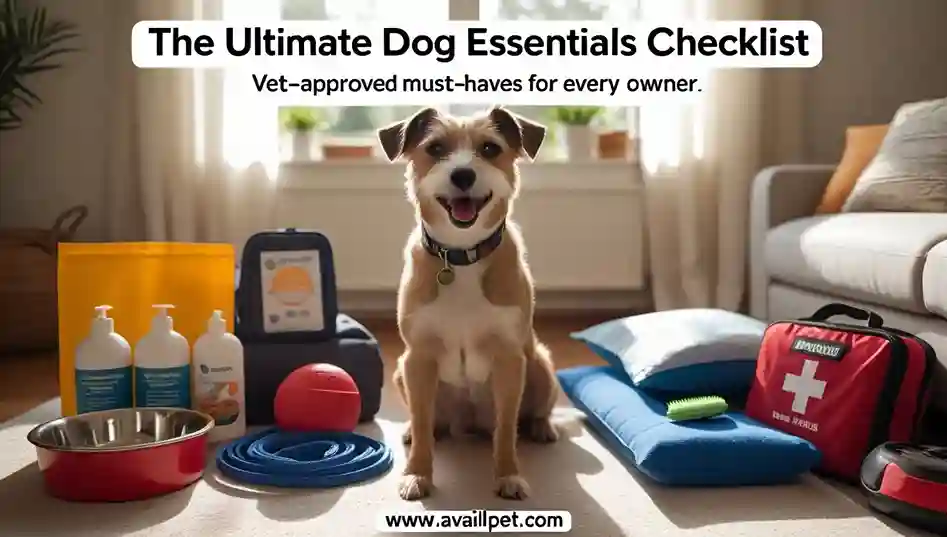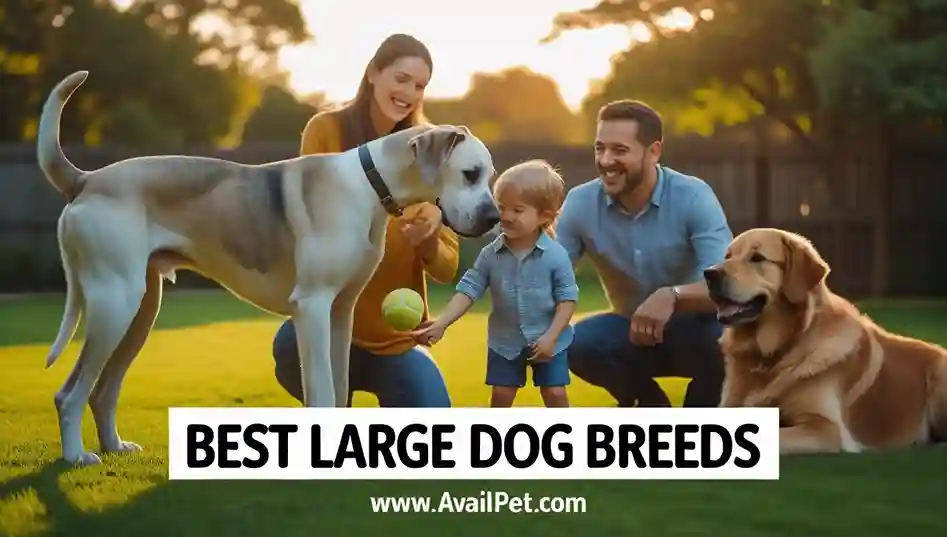Congratulations on your decision to bring a new dog into your life! This journey is filled with moments of joy, but we know that the first few weeks can also feel overwhelming. The secret to a smooth transition? A solid plan. This comprehensive new dog owner checklist is your ultimate guide, designed to eliminate the guesswork and set you up for success from day one.
Whether you’re adopting an adult dog or bringing home a bouncing puppy, this step-by-step new dog owner checklist will walk you through every essential task. We’ve collaborated with veterinary experts to create a timeline that covers everything you need—from the supplies you must have before your dog arrives, to the crucial vet visit in the first week, and the foundational training that will build a lasting bond over the first month.
Forget scouring dozens of websites. Consider this your all-in-one, vet-approved new dog owner checklist. Let’s get started on the right paw and ensure your first 30 days together are as rewarding and stress-free as possible.
Key Takeaways at a Glance
Before we dive into the detailed timeline, here are the most critical steps from our new dog owner checklist. These are the non-negotiable priorities for any first time dog owner to ensure a safe and positive start.
- Secure Essential Supplies First: Have a crate, food, bowls, collar with ID tag, and leash ready before your dog comes home. This is the foundation of our new dog owner checklist.
- Schedule the Initial Vet Visit: Book an appointment with a veterinarian within the first 48-72 hours for a health check and to discuss your puppy’s vaccination schedule and preventative care.
- Establish a Potty Routine Immediately: Establish a Potty Routine Immediately: Consistency from day one is the fastest path to successful housetraining. For a detailed, step-by-step guide, see our vet-reviewed article on how to potty train a puppy.
- Puppy-Proof Your Home: Protect your new companion by removing toxic plants, securing electrical cords, and storing household chemicals out of reach. Our detailed guide on how to puppy proof your home walks you through it room-by-room.
These priorities form the backbone of a successful transition. Our complete new dog owner checklist below will guide you through every detail.
Pre-Arrival Checklist: Essential Supplies to Buy Now
Preparing your home before your dog’s arrival is the first and most critical step in our new dog owner checklist. Having the right supplies on hand will reduce stress for both you and your new companion, creating a calm and welcoming environment. This foundational part of the new dog owner checklist ensures you’re ready for their needs from the moment they step inside.
Nutrition & Hydration Essentials: Purchase high-quality dog food appropriate for their age and size. You’ll also need sturdy, easy-to-clean ceramic or stainless steel bowls for food and water. This is a fundamental part of any dog supplies checklist. Purchase high-quality dog food appropriate for their age and size. Knowing how much and how often to feed is just as important. Our puppy feeding schedule by age guide provides vet-approved templates.
Safety & Identification: A well-fitting collar and a secure leash are non-negotiable for safe walks. An ID tag with your current phone number is your dog’s first line of defense if they get lost. This is a crucial safety item on our new dog owner checklist.
A Cozy Bed & Secure Crate: Provide a dedicated, comfortable bed for rest. A crate serves as a safe den for your dog and is an invaluable tool for housetraining and preventing destructive behavior when unsupervised.
Grooming & Clean-Up Basics: Be prepared with a brush suitable for your dog’s coat type, dog-safe nail clippers, and enzymatic cleaner for inevitable accidents. Having these items ready is a key part of our new puppy checklist.
Following this pre-arrival new dog owner checklist will give you the confidence and tools needed for a successful first day.
The First 24 Hours: Creating a Safe & Calm Introduction
The first day is a pivotal moment. Your primary goal is to build trust and make your new dog feel secure, not to overwhelm them. A calm and structured first 24 hours, as outlined in this new dog owner checklist, sets the tone for a confident and well-adjusted pet.
Designate a “Safe Zone”: Before you bring your dog home, set up a quiet area. This gives them a sanctuary to retreat to, a vital part of preparing for a new dog and reducing initial stress.
The Car Ride Home: Ensure you have a secure crate or a dog seatbelt harness. Keep the environment calm—avoid loud music and offer quiet reassurance.
The First Introduction: Once home, take your dog directly to their potty spot. After they’ve relieved themselves, bring them inside and allow them to explore their new “safe zone” at their own pace. This step in your first-time dog owner plan prevents accidents and builds positive associations.
Limit Excitement: Resist the urge to have friends and family over immediately. Keeping introductions calm is a key piece of advice for bringing a new dog home and prevents your new pet from becoming overstimulated.
Sticking to this plan for the critical first day shows your dog that their new home is a predictable and safe place, ensuring your new puppy checklist leads to a successful transition.
Week 1: Your Dog’s First Vet Visit & Health Foundation
The first week is crucial for establishing your dog’s long-term health. A visit to the veterinarian is the single most important task on your first time dog owner agenda. This isn’t just a checkup; it’s about building a relationship with a professional who will be your partner in your dog’s care.
What to Bring: Prepare for the appointment by bringing any existing vaccination records from the shelter or breeder, and a fresh stool sample for parasite testing. Being prepared is a key part of responsible caring for a new dog.
Core Vaccinations & Discussion: Your vet will outline a puppy vaccination schedule or check the status of an adult dog’s shots. This is your chance to discuss a long-term plan for preventative care against heartworm, fleas, and ticks.
Nutrition & Spay/Neuter Consultation: Ask your vet to confirm you’ve chosen an appropriate food and to discuss the ideal time for spaying or neutering. This proactive step is a cornerstone of any responsible dog ownership checklist.
Completing this initial health assessment provides a baseline and ensures you’re starting your journey together on the right foot, a primary goal of this new puppy care guide.
Weeks 2-4: Building Routines for Training & Socialization
With the initial adjustment period over, the following weeks are about building a lasting foundation of good behavior and confidence. This phase of your guide for new dog owners focuses on turning basic care into consistent routines and positive experiences that will shape a well-mannered adult dog.
Mastering Housetraining: Consistency is everything. Take your dog out first thing in the morning, after meals, after naps, and before bedtime. Always use the same door and spot, and offer enthusiastic praise and a small treat immediately after they succeed. This consistent routine is the most effective potty training strategy.
Introducing Basic Commands: Start with simple, essential commands like “sit,” “stay,” and “come.” Keep training sessions short (5-10 minutes), positive, and rewarding. This basic obedience training strengthens your bond and establishes your role as a gentle leader.
The Power of Positive Socialization: Carefully expose your dog to a wide variety of safe, positive experiences. This includes different people (including children), friendly vaccinated dogs, common street sounds, and surfaces like grass, pavement, and tile. Proper puppy socialization checklist is critical for preventing fear and anxiety later in life. For a complete list of what, when, and how to socialize your new dog, follow our expert puppy socialization checklist.
Investing time in this phase of your dog care guide pays a lifetime of dividends in the form of a happy, well-adjusted, and obedient companion.
Expert Advice: A Veterinarian’s Top 3 Safety Tips for New Owners
Beyond the supplies and schedules, your dog’s safety is paramount. We consulted with veterinary professionals to bring you the most critical, non-negotiable safety tips that every person bringing a new dog home needs to know. Integrating these into your dog care plan can prevent emergencies and ensure your pet’s well-being.
1. Know the Common Toxins: Many household foods and plants are dangerous for dogs. Ensure chocolate, xylitol (found in sugar-free gum and peanut butter), grapes, raisins, and onions are completely inaccessible. Also, research common toxic plants like lilies, sago palms, and tulips. This knowledge is a vital part of puppy-proofing your home.
2. Prioritize Safe Confinement: Never give a new dog free rein of your house when unsupervised. Use a crate or a designated puppy-proofed room to prevent them from chewing electrical cords, ingesting foreign objects, or getting into household chemicals. This practice is essential for caring for a new dog and prevents costly vet visits.
3. Learn to Recognize Stress and Illness: Your dog can’t tell you when they’re unwell. Watch for key signs like lethargy, loss of appetite, vomiting, diarrhea, or excessive hiding. In terms of behavior, yawning, lip-licking, and whale eye (showing the whites of their eyes) can indicate stress. Understanding these signals is a crucial component of responsible dog ownership.
Following this expert dog care advice proactively addresses the most common risks new pets face, giving you peace of mind.
New Dog Owner Checklist FAQ
You’re not alone in your questions! Here are clear, concise answers to the most common questions we receive from people using our new dog owner checklist. This FAQ is designed to give you quick, actionable advice.
What is the most important thing to buy for a new dog?
Beyond food, a secure collar with an ID tag and a properly fitted leash are the most critical purchases for immediate safety on walks and in case your dog gets lost.
How do I introduce my new dog to my current pets?
Keep the first introduction calm and controlled, ideally on neutral territory like a quiet park. Keep both animals on leashes, allow them to sniff from a distance, and watch for relaxed body language. Always supervise their interactions closely for the first few weeks.
When is the right time to start training a new puppy or dog?
You can and should start basic training immediately. Simple commands like “sit” and their name can be taught on day one. The key is to keep sessions very short (under 5 minutes) and always end on a positive, successful note.
My new dog seems scared and hides. Is this normal?
Yes, this is very common. The best thing you can do for a fearful new dog is to give them space and not force interaction. Ensure they have access to their safe zone (crate or quiet room) with food, water, and a bed. Let them come to you on their own terms as they build confidence.
This FAQ for first time dog owners addresses the biggest worries, helping you feel more prepared and confident.
Your Printable New Dog Owner Checklist
This at-a-glance summary consolidates everything from our complete new dog owner guide. Save it, print it, and check off each item to ensure you and your new best friend have the perfect start.
Pre-Arrival: The Essentials
- High-quality dog food & treats
- Ceramic or stainless steel food/water bowls
- Secure collar/harness & leash
- ID tag with your phone number
- Comfortable dog bed & crate
- Variety of safe chew toys
- Brush & dog-safe nail clippers
- Enzymatic cleaner & poop bags
- Puppy-proofed home (toxins secured, cords tucked away)
The First 24 Hours: Foundation
- Designated “safe zone” prepared
- First potty trip immediately upon arrival
- Calm introductions to family members
- Established feeding spot and schedule
- Limited visitors and excitement
Week 1: Health & Routine
- First veterinary visit scheduled/completed
- Vaccination & preventative care plan discussed
- Consistent potty and feeding routine established
- Began basic name recognition and “sit” training
Weeks 2-4: Training & Bonding
- Consistent housetraining routine maintained
- Daily short, positive training sessions
- Controlled socialization with new sights/sounds
- Positive introductions to other pets (if applicable)
- Continued positive reinforcement for good behavior
Using this new dog owner checklist ensures you cover all bases for a smooth transition and a happy, healthy dog.
Final Thoughts
Embarking on the journey of dog ownership is one of life’s most rewarding adventures. While the initial days require planning and patience, following this new dog owner checklist ensures you build a foundation of trust, health, and happiness that will last a lifetime.
Remember, every dog is an individual, so adapt this guide to your pet’s unique personality and needs. You have the knowledge and the plan—now go enjoy the incredible bond you’re about to build.
Article Sources and Verification
At AvailPet, we are committed to providing accurate, evidence-based information. Our articles are thoroughly researched and written by pet care enthusiasts, then reviewed and verified by a team of dedicated pet owners and researchers to ensure they meet our high standards for accuracy and integrity. We utilize a combination of the following sources:
- Peer-Reviewed Veterinary Journals: For scientific claims regarding pet health and nutrition.
- Interviews with Licensed Veterinarians: For professional advice and medical recommendations.
- Reputable Institutions: Such as the American Veterinary Medical Association (AVMA), American Animal Hospital Association (AAHA), and American Kennel Club (AKC).
- Direct Product Testing & Manufacturer Information: For our hands-on product reviews and recommendations.
Full Disclosure: This article may contain affiliate links. If you make a purchase through these links, we may earn a commission at no extra cost to you, which helps us continue to provide valuable content. Read our full Disclaimer for more information.






